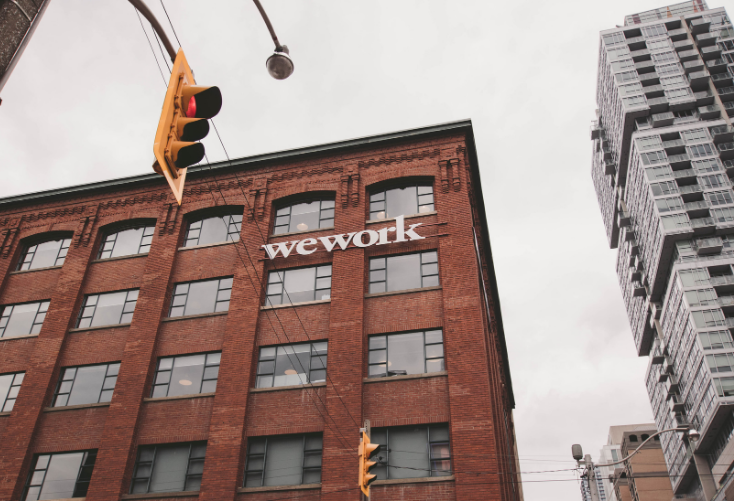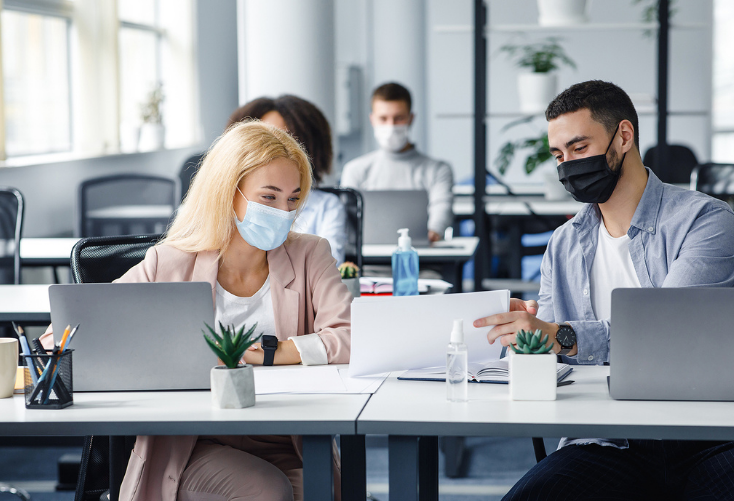Hand selected flexible workspace news from the most reliable sources to keep you ahead of the pack. We find all the latest news, so you don’t have to. Morning and afternoon updates. Stay in the know.
Here’s what you need to know today:
- Leading With The Employee Experience In Mind NEW
- Automation’s Major Role In The Workplace NEW
- Coworking Could Solve Work Arrangement Issues NEW
- WeWork At High Risk For Default
- Preparing For A Post-pandemic Workplace
- What To Expect From The Future Of Offices
Leading With The Employee Experience In Mind
With COVID-19 cases on the rise once again, organizations are being forced to grapple with the grim realities of a second wave of the virus.
One thing that many companies have in common is the mass adoption of flexibility, and it has become abundantly clear that this transition is not temporary.
The pandemic has highlighted that the way people work and live cannot be resolved by a one-size-fits-all approach. Now, offering flexible solutions is key to maintaining optimal work operations.
According to a survey from M Moser Associates, 83% of respondents said they enjoy working remotely and 86% said they would even be willing to give up certain benefits for increased flexibility.
Listening to what employees want out of their work experience will be crucial for companies looking to retain their top talent and ensure that they are happy in their positions.
But what can companies specifically do to keep employees engaged, successful and productive?
Both physical and mental health, as well as safety, are at the front of nearly everyone’s minds as the threat of the pandemic looms over. That is why companies need to provide workers with the necessary resources to care for themselves, as well as lead with empathy.
Inclusivity and community are some of the crucial reasons for why people stay on at a company. Emphasizing these values helps employees feel supported, recognized, welcomed and valued.

Automation’s Major Role In The Workplace
Automation will become a mainstay as a result of the world’s largest work from home experiment.
According to a report from market research firm Forrester, around 30% of companies are expected to focus more on testing automation before using it for production or exposing employees to it next year.
“As a result of the pandemic, new forms of automation will support one in four remote workers either directly or indirectly by 2022,” the report read.
The implementation of this technology will inevitably support employees by handling their benefits, customer service and menial business tasks.
For example, the consumer drone industry has seen an uptick recently. There are two factors that are accelerating the adoption of drones: governments are creating better regulations that make drone adoption simpler, and advancements in 5G are enabling drone intelligence.
“But rushed and haphazard automation exposes systems and the business to serious risk, so the lack of focus on automation quality is alarming,” the report stated.

Coworking Could Solve Work Arrangement Issues
Australia’s The Foundry Cowork recently conducted a survey that revealed that a large number of Erina residents have been working from home.
With this comes the struggle of balancing home and work responsibilities, while basking in the perks of not having a commute.
So how can workers experience total bliss when it comes to finding a healthy work-life balance? The solution may be a coworking space.
“A flexible working agreement is critical for those employees whose workplace has been impacted by the pandemic,” said Mel Archer, owner of The Foundry Cowork.
According to the firm’s survey, 54% of respondents have not had a discussion about remote working arrangements. Having this talk with employers will be necessary moving forward, and coworking could benefit both the company and employees.
“In many instances, employers will cover the cost of an employee using a coworking space as it gives the employer peace of mind that their employees are working from a professional and productive work environment,” said Archer.
This could lead to improved job satisfaction and decreased absenteeism, which means that employees perform better. Additionally, workers can come into a workspace and get a sense of community that is difficult to replicate virtually.

WeWork At High Risk For Default
Credit ratings agency Fitch Ratings has demoted WeWork’s rating, due to concern that the company will be unable to pay off long-term debt and the diminishing demand for office space.
“While WeWork has made material progress to reduce its cash burn rate, in a scenario where demand is structurally lower, Fitch sees WeWork as potentially requiring additional liquidity sources inclusive of and beyond the full $3.3B SoftBank financing commitment,” Fitch said in a statement.
WeWork’s rating went from CCC+ to CCC as Fitch indicates that the possibility of WeWork burning through all its cash is high. This sort of rating means that default on long-term debt has become a stronger possibility.
Best-case scenario, WeWork would see a cash burn rate of about $900 million next year and experience a “moderately positive free cash flow.”
However, a worse-case scenario indicates that the incoming second wave of COVID-19 will continue to damage office demand, leading WeWork to burn through $1.5 billion during the next two years. This means the firm would be out of money by 2022.
“While SoftBank has consistently provided additional funding sources and operational support, it is unclear that further funding would be available in a distressed scenario,” Fitch’s statement read.
WeWork has introduced new initiatives to help boost office usage throughout the pandemic, such as its All Access subscription-based program that allows members to work from any WeWork location.
Still, it is unclear whether these new initiatives will help the company achieve profitability.

Preparing For A Post-pandemic Workplace
At some point, companies will need to face how to continue operating their business after the pandemic has ended. While it will likely take years for this scenario to become reality, the time for planning is now.
During the BlackTechFest event, panelists discussed what actions need to be taken in order to seamlessly transition into a post-pandemic workforce.
“I think it’s obvious to us right now, but something that we couldn’t have predicted 12 months ago, is that we are all going to have much more flexibility in where we choose to work from, which I think is great, especially for us parents who need that time at home, who are missing out on precious times,” said Gabriela Hersham, CEO of coworking space Huckletree.
Julian Hall, CEO of Ultra Education, says that the acceleration of certain skill sets, such as critical thinking and teamwork, will boost the entrepreneurial community. He explains that with millions of young people struggling to find work, they may turn to creating the job they want.
“In working with communities who don’t often have access to a brilliant work pipeline, the schools are often better pivoted towards creating their own employment and creating their own dream job because many of them simply don’t have the networks to get them into the types of work that they would love,” said Hall.
The most impactful trend that all panelists agreed on is the need for a more diverse workforce that does not focus on meeting a quota. This means more than posting a photo on the company website touting a diverse workplace — it means real action should take place.

What To Expect From The Future Of Offices
Offices will never look the same after the pandemic has completely altered the way we work and live. While companies have committed to permanent remote working solutions, that does not mean that the office is dead.
This pandemic is accelerating a shift in the design and architecture of workplaces that were already taking place.
For starters, sustainability and well-being will become of the utmost importance in the office. Now more than ever, companies will be focused on how to keep their employees safe and healthy.
A new awareness of wellness will take over the workplace, and this goes beyond yoga classes and meditation rooms. Organizations will implement new air filtration systems to boost air flow, install UV lights to kill spread of virus’ and much more.
Additionally, advanced technology will be critical to keeping the workplace safe. This means touchless technology will be included in high-touch areas such as entryways, elevators, bathrooms and more.
Even more, corridors and common spaces will be designed with more space in mind as we become hypervigilant of our proximity to others.
Lastly and possibly the most important change will be the inclusion of flexibility in the workplace. According to Cushman & Wakefield’s “The Future of Workplace” report, offices of the future will consist of numerous locations and experiences, rather than one main headquarters.
Companies will adopt flexible offices in the suburbs and take up less real estate in major cities. This will be done in hopes of providing workers with a sense of community, without putting their health and safety at risk.



 Dr. Gleb Tsipursky – The Office Whisperer
Dr. Gleb Tsipursky – The Office Whisperer Nirit Cohen – WorkFutures
Nirit Cohen – WorkFutures Angela Howard – Culture Expert
Angela Howard – Culture Expert Drew Jones – Design & Innovation
Drew Jones – Design & Innovation Jonathan Price – CRE & Flex Expert
Jonathan Price – CRE & Flex Expert














